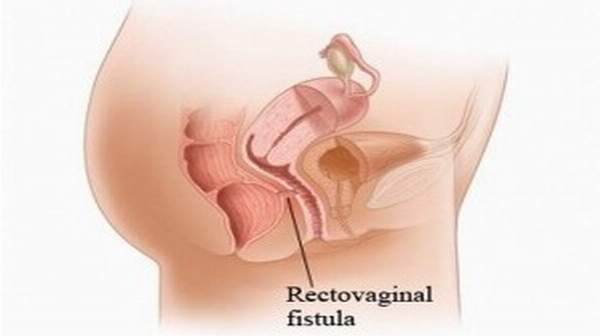What's in this article?
 That is Fistula
That is Fistula
A fistula is defined as the connection of two body cavities (such as the rectum and the vagina) or as the connection of a body cavity to the skin (such as the rectum to the skin). This is not a normal occurrence. One way a fistula may form is from an abscess a pocket of pus in the body. The abscess may be constantly filling with body fluids such as stool or urine, which prevents healing. Eventually the fistula breaks through to the skin, another body cavity, or an organ. Fistulas are more common in Crohn’s disease than in ulcerative colitis. Approximately one quarter of people with Crohn’s disease develop fistulas.
Types of Fistulas
Fistulas often occur in the area around the genitals and anus (known as the perineum). The four types of fistulas are:
♦ Enterocutaneous: This type of fistula is from the intestine to the skin. An enterocutaneous fistula may be a complication of surgery. It can be described as a passageway that progresses from the intestine to the surgery site and then to the skin.
♦ Enteroenteric or Enterocolic: This is a fistula that involves the large or small intestine.
♦ Enterovaginal: This is a fistula that goes to the vagina.
♦ Enterovesicular: This type of fistula goes to the bladder. These fistulas may result in frequent urinary tract infections, or the passage of gas from the urethra during urination.
An obstetric fistula is a hole between the vagina and rectum or bladder that is caused by prolonged obstructed labor, leaving a woman incontinent of urine or feces or both.
For women with obstructed labor, labor that goes unattended, the labor can last up to six or seven days. The labor produces contractions that push the baby’s head against the mother’s pelvic bone. The soft tissues between the baby’s head and the pelvic bone are compressed and do not receive adequate blood flow. The lack of blood flow causes this delicate tissue to die, and where it dies holes are created between the laboring mother’s bladder and vagina and/or between the rectum and vagina. This is what produces incontinence in a fistula patient.
Obstetric fistula most commonly occurs among women who live in undeveloped countries, who give birth without any access to medical help. If a woman’s labor becomes obstructed, she could remain in excruciating pain for days before her baby is finally dislodged. Her baby likely dies and she is often left with an obstetric fistula, a small hole created by constant pressure from the fetus, which renders her incontinent.
Fistulas may occur in many parts of the body. Some of these are:
♦ Arteriovenous (between an artery and vein)
♦ Biliary (created during gallbladder surgery, connecting bile ducts to the surface of the skin)
♦ Cervical (either an abnormal opening into the cervix or in the neck)
♦ Craniosinus (between the space inside the skull and a nasal sinus)
♦ Enterovaginal (between the bowel and vagina)
♦ Fecal or anal (the feces is discharged through an opening other than the anus)
♦ Gastric (from the stomach to the surface of the skin)
♦ Metroperitoneal (between the uterus and peritoneal cavity)
♦ Pulmonary arteriovenous (in a lung, the pulmonary artery and vein are connected, allowing the blood to bypass the oxygenation process in the lung)
♦ Umbilical (connection between the navel and gut)
Types of fistulas include:
♦ Blind (open on one end only, but connects to two structures)
♦ Complete (has both external and internal openings)
♦ Horseshoe (connecting the anus to the surface of the skin after going around the rectum)
♦ Incomplete (a tube from the skin that is closed on the inside and does not connect to any internal structure)
Are there different types of fistula?
There are quite a few different types of fistula. Those most commonly associated with Crohn’s Disease are described below.
♦ Anal or ‘perianal’ fistulas. These connect the anal canal (back passage) to the surface of the skin near the anus. These are the most common form of fistula and are often associated with an abscess around the back passage.
♦ Bowel to bladder fistulas, also called enterovesical or colovesical fistulas.
♦ Bowel to vagina or enterovaginal fistulas. If the fistula links the rectum to the vagina it is known as a rectovaginal fistula.
♦ Bowel to skin fistulas in areas other than near the anus, for example, on the abdomen. These are known as enterocutaneous fistulas. They often occur following surgery, along the line of the incision.
♦ Fistulas linking different parts of the bowel or intestine together, bypassing a section in between. These are enteroenteric or enterocolic fistulas.
Fistula Symptoms
Symptoms of fistulas can include pain, fever, tenderness, itching, and generally feeling poorly. The fistula may also drain pus or a foul-smelling discharge. These symptoms vary based on the severity and location of the fistula.
Fistula Treatment
Treatments for fistulas vary depending on their location and severity of symptoms. Medicinal treatments include antibiotic, an immunosuppresant or TNF-inhibitor.
An enteral diet may be prescribed for enterovaginal, enterocutaneous, and enterovesicular fistulas. An enteral diet is liquid nutrition that is taken by mouth or given through a feeding tube. These liquid nutrition formulas replace solid food and contain vital nutrients. With no solid food there is less stool passing through the anus, which helps the fistula heal and maybe even close.
Fistulas that don’t respond to any of the above therapies may require surgery. If the fistula is in a healthy part of the intestine, it may be removed without taking out any part of the intestine. If the fistula is in a very diseased part of the bowel, a resection may have to be performed.
A resection may result in a temporary ileostomy. Stool is diverted through the ileostomy, giving the part of the intestine with the fistula time to heal. This type of surgery is most often done on rectovaginal or enterovesicular fistulas.





